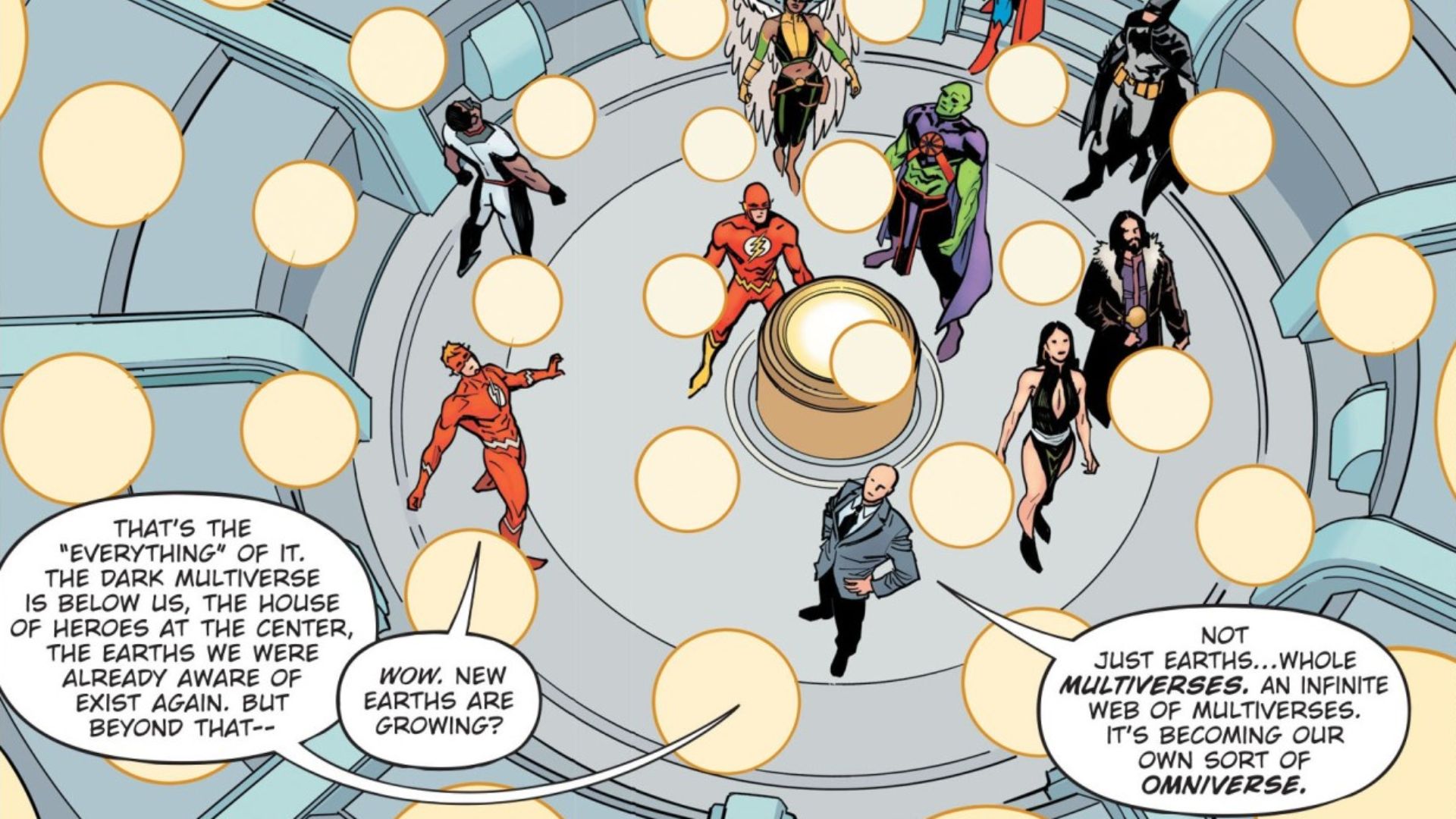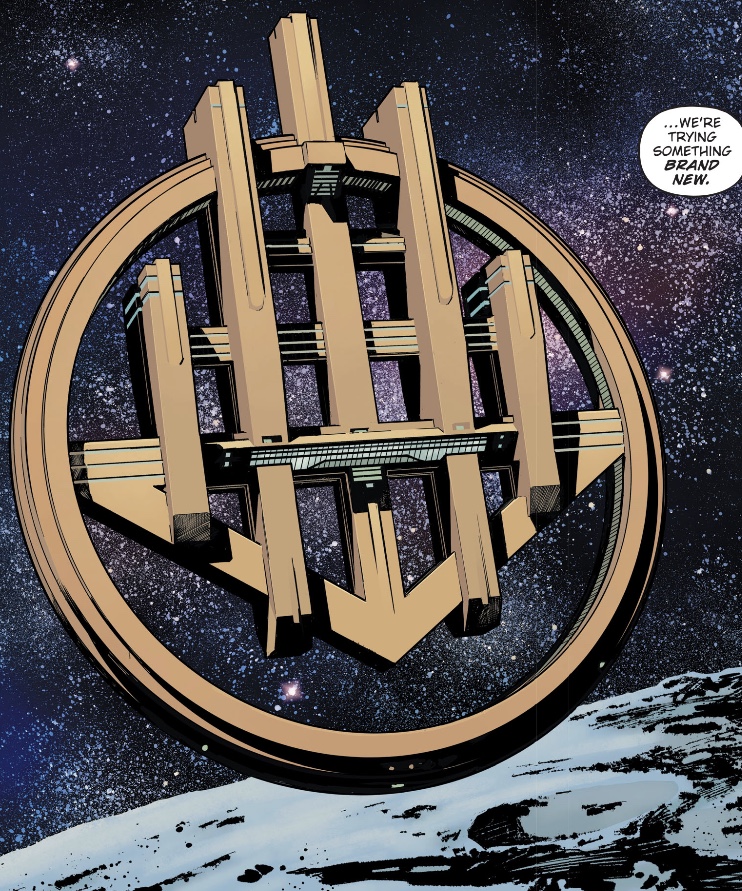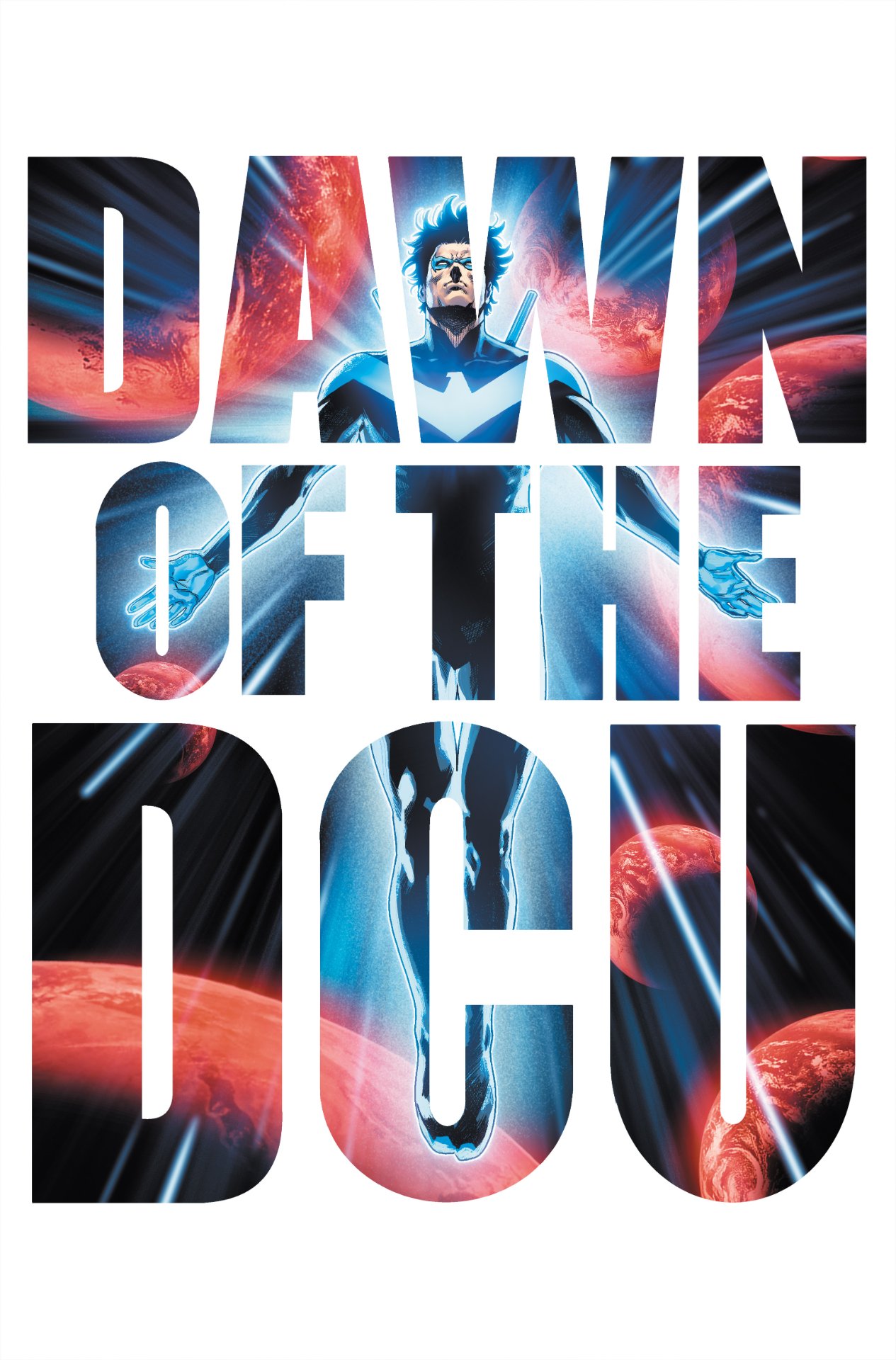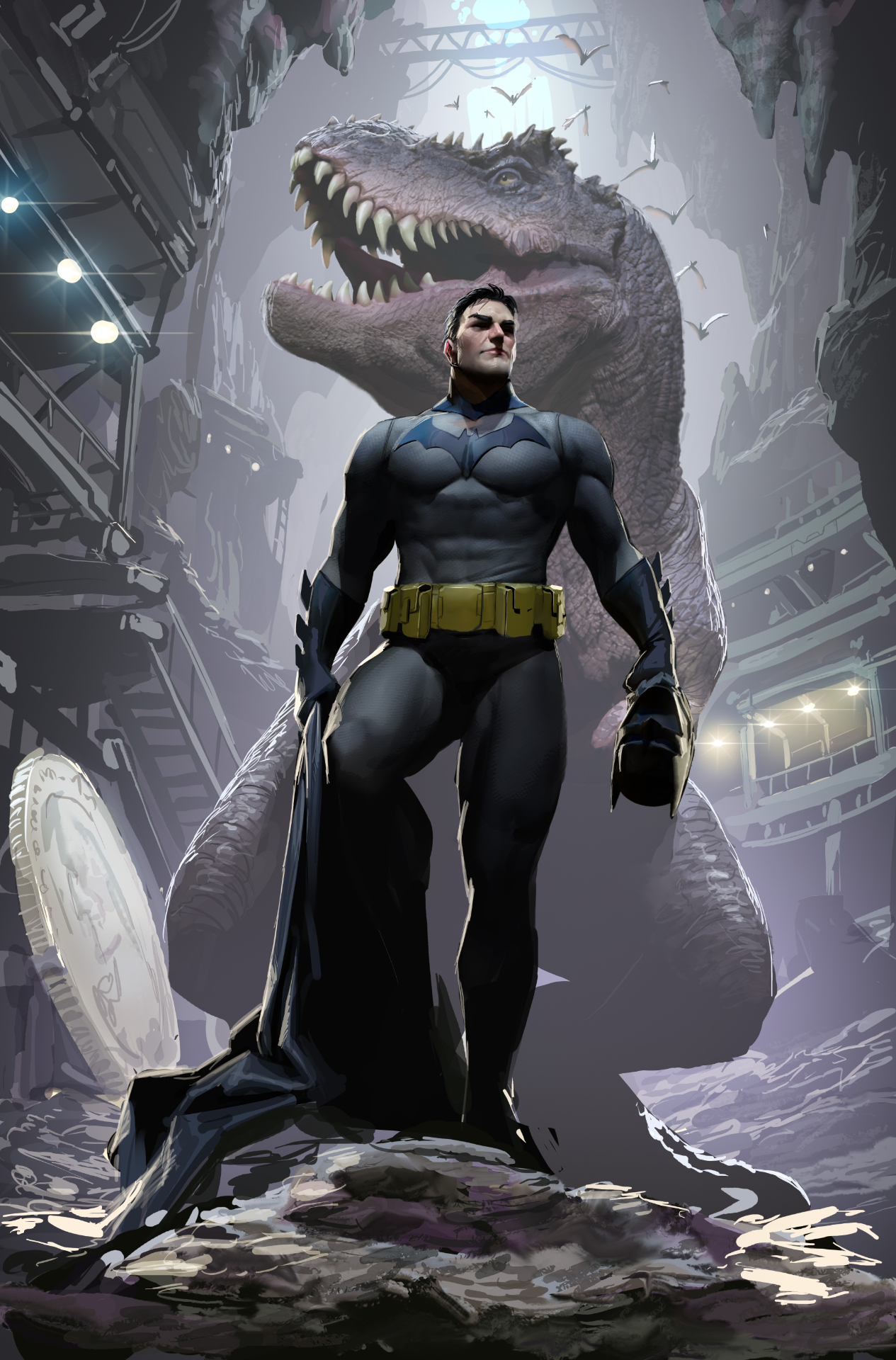Remember the Totality - a Dawn of the DCU cautionary tale
December and January's Dawn of the DCU is sure to be filled with big ideas, but there needs to be follow-through this time

It began with such expansive possibilities and promise…
Writer Scott Synder and artist Greg Capullo's 2020 sequel to their Dark Nights: Metal event, Dark Nights: Death Metal, was a huge, bombastic, tour de force limited series that began with the DC Universe utterly transformed into an unrecognizable funhouse mirror version of itself.
And we mean that in a good way.
But even when Snyder and artist Yanick Paquette reverted the DC Earth and all its heroes back into their more recognizable forms in something of an epilogue-like sequence in its final issue, the writer left a trail of breadcrumbs … well, a well-lit train of breadcrumbs with ample signage … for subsequent creators to follow for future DC stories.
The exposition-heavy sequence introduced a giant space station on the dark side of the Moon called the Totality. "A shield protecting the DCU worlds from future threats, manned by its greatest minds," Barry Allen explains to Wally West … "villains and heroes together … the next stage of the Halls of Justice and Doom."

Wally is then shocked when the present Justice League members Batman and Superman (Wonder Woman was evolving on a higher plane of existence at the time) introduce the members of the new superteam, eponymously named The Totality - Hawkgirl, Martian Manhunter, Mr. Terrific, along with Vandal Savage, Talia al Ghul, and Lex Luthor.
In a subsequent special, it was revealed Alan Scott/Green Lantern would serve as a Sentinel - a head of security of sorts for the Totality, and Barry would join the Justice League Incarnate to help explore the Omniverse.
Get the best comic news, insights, opinions, analysis and more!
What was that, you ask? That was the new status quo of the DCU, an "Omniverse" that was growing exponentially into an "infinite web" of Multiverses.
Among the other big ideas were that the events of Death Metal brought back dead DC characters, even some who died prior and unrelated to the events of the series; that Hypertime was repairing and characters would experience flashes of their former lives "in pretty epic fashion," and that two new sources of energy were found at the center of the multiverse. One turned out to be something of a prison planet that held Darkseid for a literal minute, the other was an Earth, which was described as an "Alpha world" named Elseworld.

The sequence was designed as a primer to the new editorial era DC called "Infinite Frontier."
Elseworld was supposed to be picked up in a surprise new 2021 title of some kind that was never published or acknowledged by DC again, and the Totality in particular seemed poised to become a big deal in the DCU.
But a funny thing happened on the way to Infinite Frontier…
…many of the concepts introduced in Death Metal #7 were never really heard from again.
Now to be fair, some were picked up in small measure by writer Joshua Williamson, particularly in his three-part Infinite Frontier, Justice-League Incarnate, and now Dark Crisis on Infinite Earths trilogy, but mostly in very small measures.
The Darkseid prison planet played something of a role in his stories, but there've been few characters who returned from the dead due to Dark Metal, the 'epic flashes of previous lives' hasn't really been a thing, the Alpha-Earth "Elseworld" hasn't been seen again, and despite the reality-threatening events of Dark Crisis, Williamson (or anyone else for that matter) never figured out (or wanted to) what to do with the Totality.

If you haven't picked up on it by now, that's my long-winded way of saying that the Death Metal-to-Infinite Frontier transition should serve as something of a lesson when Infinite Frontier (via Dark Crisis on Infinite Earths) transitions to Dawn of the DCU next year.
Over the past 20 months since Death Metal #7, there's arguably been more expository explanations of the nature of the contemporary DCU (see Flashpoint Beyond, in particular) than actual exploration of the expanded DCU.
And now, on Death Metal's second anniversary, Dark Crisis on Infinite Earths promises to alter the nature of the DCU Omni-Multiverse once again, which will also certainly require some talking superhero heads to try to explain it all to readers.
As we mention in spaces like these often, DC spent nearly four decades trying to come up with in-story narratives to make its long and complicated timeline make some sort of linear sense.
Since the new problems those solutions created have kept multiplying upon themselves, they've spent the last several years simply acknowledging everything DC has ever published happened, while having characters try to explain the metatextual juxtaposition of Multiverses and timelines to readers. The DCU has become something of an academic first semester of college philosophical exercise that lets the publisher have its continuity cake and eat it too, at least in theory.
It gets to say Batman, Wonder Woman, Superman, and Justice League are "in" and a part of a "continuity" (which still appeals to many readers and comic book retailers) without anything actually having to be continuous.
All of those series, for example, have more or less ignored through choice or commercial necessity the events of Dark Crisis on Infinite Earths, leaving readers to decide how or if Batman's current "Failsafe" story arc, for example, pieces together with the Justice League being dead/MIA since April, and Superman in outer space on another, different mission simultaneously.

Now that's not to say I'm opposed to the newer, inclusive "it all counts" nature of the DCU. But on the other hand, you'd like to see some actual continuity, even if in the more standard literal sense and less in the colloquial comic book sense.
December's Dark Crisis on Infinite Earths #7 is sure to have a concluding chapter or epilogue filled with grand ideas about where the DCU goes next designed to get readers curious about what comes next. And considering DC is calling it a "dawn," those ideas are liable to appear significant.
But it'll be up to the creators of DC titles and particularly their editorial staff to follow up and reflect these changes in the monthly titles beginning in 2023 for it to be the actual dawn of something and not just a press release-friendly marketing label.
I'm going into it with an open mind, but at the same time, I get to rhetorically ask what the hell ever happened to Elseworld and the Totality?
And hope that it was a lesson learned.
Who will be the Dawn of the DCU's new Justice League writer?
I'm not just the Newsarama founder and editor-in-chief, I'm also a reader. And that reference is just a little bit older than the beginning of my Newsarama journey. I founded what would become the comic book news site in 1996, and except for a brief sojourn at Marvel Comics as its marketing and communications manager in 2003, I've been writing about new comic book titles, creative changes, and occasionally offering my perspective on important industry events and developments for the 25 years since. Despite many changes to Newsarama, my passion for the medium of comic books and the characters makes the last quarter-century (it's crazy to see that in writing) time spent doing what I love most.


